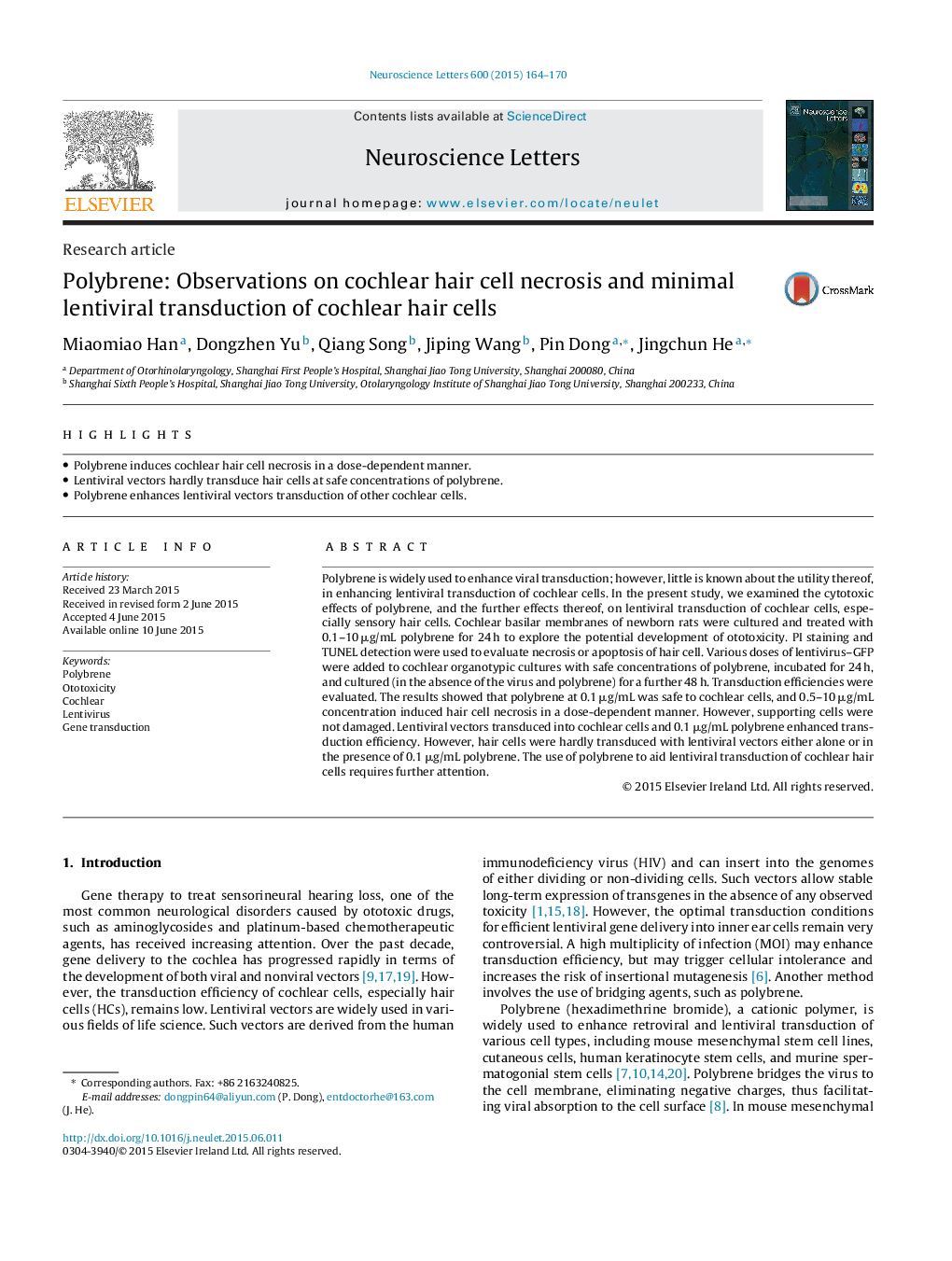| Article ID | Journal | Published Year | Pages | File Type |
|---|---|---|---|---|
| 4343404 | Neuroscience Letters | 2015 | 7 Pages |
•Polybrene induces cochlear hair cell necrosis in a dose-dependent manner.•Lentiviral vectors hardly transduce hair cells at safe concentrations of polybrene.•Polybrene enhances lentiviral vectors transduction of other cochlear cells.
Polybrene is widely used to enhance viral transduction; however, little is known about the utility thereof, in enhancing lentiviral transduction of cochlear cells. In the present study, we examined the cytotoxic effects of polybrene, and the further effects thereof, on lentiviral transduction of cochlear cells, especially sensory hair cells. Cochlear basilar membranes of newborn rats were cultured and treated with 0.1–10 μg/mL polybrene for 24 h to explore the potential development of ototoxicity. PI staining and TUNEL detection were used to evaluate necrosis or apoptosis of hair cell. Various doses of lentivirus–GFP were added to cochlear organotypic cultures with safe concentrations of polybrene, incubated for 24 h, and cultured (in the absence of the virus and polybrene) for a further 48 h. Transduction efficiencies were evaluated. The results showed that polybrene at 0.1 μg/mL was safe to cochlear cells, and 0.5–10 μg/mL concentration induced hair cell necrosis in a dose-dependent manner. However, supporting cells were not damaged. Lentiviral vectors transduced into cochlear cells and 0.1 μg/mL polybrene enhanced transduction efficiency. However, hair cells were hardly transduced with lentiviral vectors either alone or in the presence of 0.1 μg/mL polybrene. The use of polybrene to aid lentiviral transduction of cochlear hair cells requires further attention.
